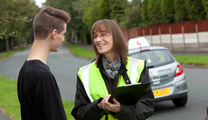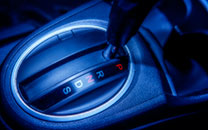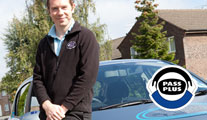How To Deal With Emergency Vehicles On Your Driving Test
30 Nov 2021

One of the biggest fears for learner drivers is the panic that the sound of sirens or flashing lights induces. A good instructor will show you how to deal with approaching emergency vehicles to ensure that you can confidently deal with them on driving test day. Even the most nervous driver can learn techniques and prepare for an emergency vehicle’s approach and what’s more, the more experience you gain, the better you will make the right choices when seeing or hearing an emergency vehicle.
What to do on your driving test
Here, we offer some tips and tricks to look over in advance of your test, although you should also familiarise yourself with Rule 219 of the Highway Code.
Be prepared
If you are looking and listening for sirens and flashing headlights, you will be less stressed when they appear. Emergency vehicles can be ambulances, fire engines, police cars and motorcycles, but also traffic officers, incident support vehicles. Sirens or flashing lights in blue, green, red or amber or simply flashing headlights are an indication that you should seek to move safely aside, so always be on the lookout.
Seek to move safely out of the way
Consider the likely safest route for the vehicle and take appropriate action to let it pass. Do not consider speeding or mounting kerbs or jumping traffic lights, you will not be exempt from prosecution and you will be held liable for accidents caused. You should never break the law yourself under any circumstances.
Don’t put anyone at risk
Do not do anything that would put yourself, other road users or pedestrians, at risk. It is always better to take a little longer to position yourself safely than to rush and endanger others. Do not brake suddenly, especially when approaching a junction or roundabout, as vehicles behind may not have the same view or opportunity to adjust speed. Slow and steady, indicating your intentions is the safest, even if it takes a little longer.
Don’t stop in an unsafe place
Avoid stopping before the brow of a hill, a bend or narrow road section. You are better continuing further and finding a safer place to wait until the vehicles have passed. Always be prepared that cars behind you will not be as fully aware and may still pass you even after you have stopped. Check thoroughly that it is safe to rejoin the road or carriageway before starting back on your journey.
Let Beverly Slater help you prepare
Why not get in touch and let our qualified driving instructors teach you to handle emergency vehicles and the many other essential driving tools, so you’re equipped to take your driving test with confidence.










